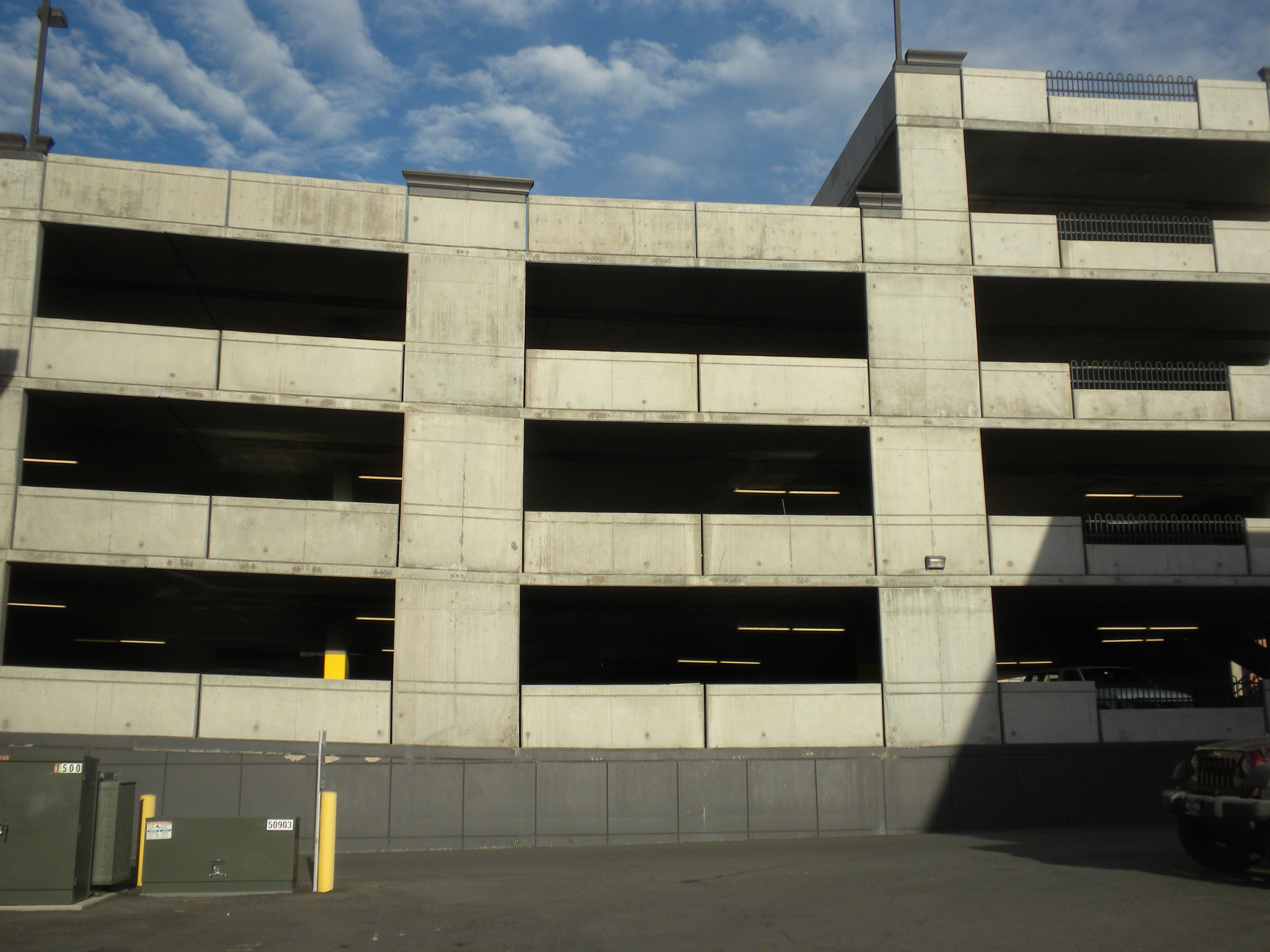Could an apartment building in Provo get by without any parking at all?
Over several posts recently I’ve been discussing walkable infrastructure, Provo’s upcoming downtown residential building and parking demand. The general impression I take away from those posts — as well as comments on those posts and other discussions — is that there’s still considerable demand for parking in Provo. The new building at 63 East Center even may be one of the rare instances in which an existing parking lot is actually contributing to something positive in the city.
So at this point high density residential parking is evidently necessary.

A parking structure that will be used for an upcoming residential tower.
But in both Portland and San Francisco apartments are in fact going up without any on-site parking. In this post from Streetsblog, Aaron Bialick explains that a 12-unit condo was just approved by the San Francisco planning commission. The building will be located along a bikeable street in an area connected to public transit. It also meets goals to increase density and reduce dependency on cars.
While the building is something of an anomaly in San Francisco, it’s actually a lot more common further north:
While few projects in San Francisco are currently built without parking, Colen noted that the real estate market in Portland, Oregon has caught on more quickly to the growing demand for car-free living. Two-thirds of new rental apartments being built in that city include no parking. ”What do they know that we don’t know?” said Colen.
The obvious problem with applying these ideas to Provo is that both Portland and San Fransisco are much larger cities. Higher populations lead to greater demand for land, more density and, ultimately, more willingness to build without parking.
That argument is clearly true to some extent and when Provo’s population passes half a million people — which is where Portland is at today — there will almost certainly be fewer parking lots in downtown and greater a willingness to build without parking.
Still, that’s not the whole story. If population, density, or even wealth were the primary factors driving this kind of development logic would suggest that San Francisco — the larger, denser city— should have more parking-free housing than Portland, not less. In reality, the smaller and sparser city is seeing more development without parking. That suggests that other factors, such as policy, culture, etc. are contributing to Portland’s leadership.
As the quote above indicates, it’s not easy to figure this situation out and even officials in San Francisco haven’t really cracked the puzzle. I also don’t expect Provo to immediately begin erecting housing with no parking at all.
But this story indicates cities are not entirely at the mercy of their size or affluence when it comes to parking and development. In other words, policy and planning do make a difference and a community can will itself toward greater efficiency. Or, put another way, as the sign in the Maeser neighborhood declares, we are makers of our own destiny.






